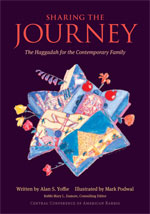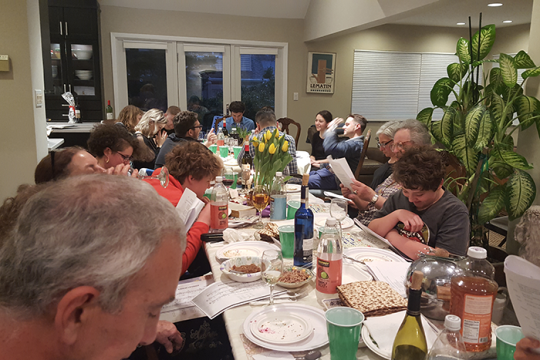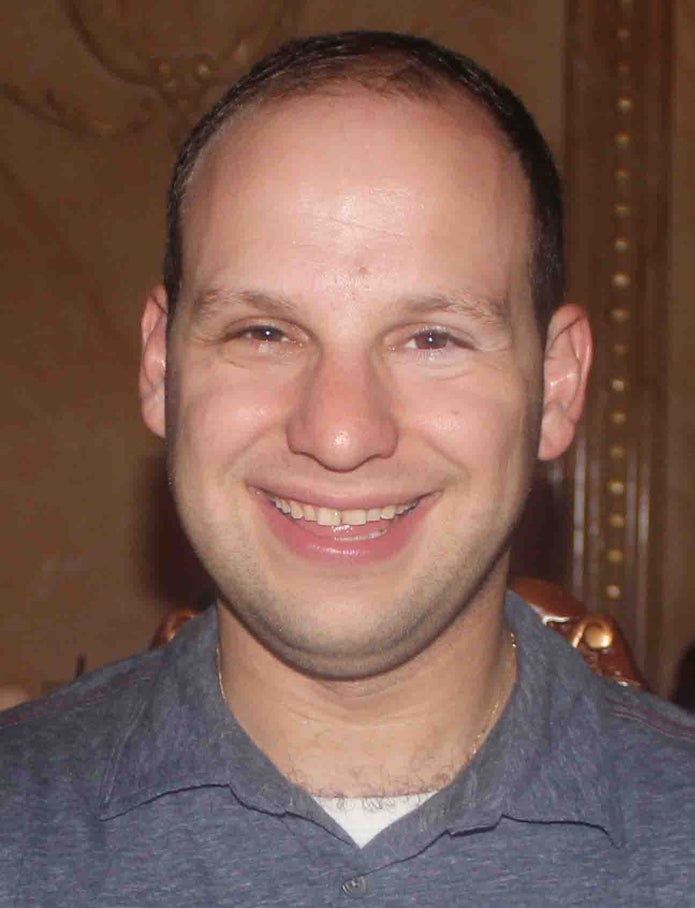
What makes a Passover seder special? Maybe it’s the meal? Or is it the people we dine with? Perhaps it is the ancient songs that we join together in singing. Indeed all of these aspects of the evening contribute to the beauty of the event, but it is the Haggadah that makes the Passover seder the most widely observed Jewish ritual around the world.
The anchor of the evening, the Haggadah, meaning “telling,” dictates the seder (order) of our night. It is here that we read about the Passover story, are instructed to invite guests to our table, and are encouraged to rejoice in song and feast.
From Torah, we are commanded only to observe the Passover fast and to recall the story. Like so many texts in our tradition, the Haggadah guides the rest of the seder customs but its authorship is unknown. According to Jewish tradition, however, the first Haggadah was likely compiled around 200 C.E. during the Mishnaic period. The first words may have been drafted as early as 170, but a Talmudic statement suggests the earliest completion about the time of Rav Nachman (Pesachim 116a).
However, there remains some dispute as to whether the Nachman being referenced is Rav Nachman Bar Yaakov (circa 280) or Rav Nachman bar Yitzchak (circa 360). However, an alternative theory emerges from the Malbim (Meïr Leibush ben Jehiel Michel Weiser), a 19th century rabbinic scholar, and a minority of commentators, who argue that the Haggadah dates to the era of Rav Yehuda haNasi (100s CE), perhaps even put together by Nasi himself.
One has to pass through about one thousand years of history, however, to find evidence of written Haggadic text.
The oldest known manuscripts date to Saadia Gaon in the 10th century, but it is not until the 14th century that we find a Haggadah as a standalone work. That document, “The Golden Haggadah,” was compiled about 1320 and was followed shortly thereafter by the “Sarajevo Haggadah.” The year 1486 saw the publication of the oldest confirmed printed Haggadah by the Soncino family from Italy. Interestingly, the advent of the printing press did little to foster the creation of new Haggadot (plural of Haggadah); in the eighteenth century, fewer than 250 editions are known to have existed. Only in the modern era have Jewish communities seen great expansion, with the last two centuries seeing upwards of 2,500 editions.
Landmark when it was first published in 1932; the Maxwell House Haggadah now seems like a distant memory for anyone looking to modernize their seder. While many Orthodox and traditional communities still keep as close to the ancient texts as possible, progressive thinking has resulted in thousands of specialized Haggadot designed for every niche and interest. Consider, for example:
- Members of the LGBT community, for example, have created Haggadot that link the theme of freedom for the Israelites to political and social freedom for today's LGBTQ+ community.
- Also incorporating this theme of rebirth in the aftermath of hardship, the 1940s and '50s saw Haggadot created for a Jewish community struggling to respond the Holocaust.
- Environmental advocacy groups have used the holiday to highlight the figurative enslavement of nature at human hands.
- In recent year, social networking has become a part of the experience with a humorous but accurate Facebook Haggadah depicting the relationship between Moses, God, and Pharaoh through status updates, friend request, and check-ins.
These are just a few of the thousands of options that exist for anyone looking to introduce a new and modern element to their dinner table rituals. To narrow your focus, CCAR Press, a Reform Jewish publisher, offers a handful:
- A Passover Haggadah, themed around social justice and first published in 1978
- The Open Door: A Passover Haggadah released in 2002 and centered on modern interpretations of traditional practices and music.
- Sharing the Journey: The Haggadah for the Contemporary Family, which is based on inclusiveness, explanation, and art.
Looking for something creative and modern? Check out "16 Unique Haggadot to Enliven Your Passover Seder."
Related Posts

Harnessing the Power of our Mothers Around the Seder Table

Melding Tradition and Innovation: Our Interfaith Toddler Naming Ceremony


